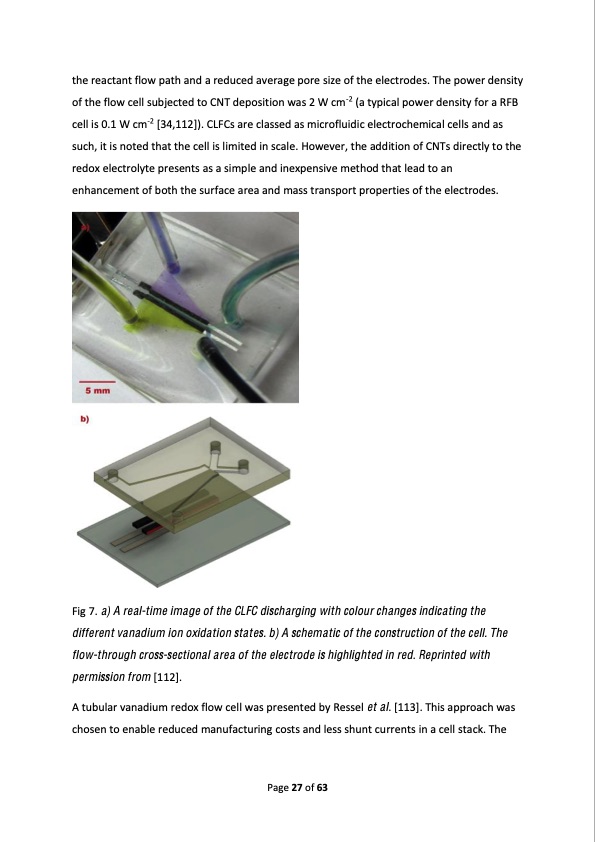
PDF Publication Title:
Text from PDF Page: 027
the reactant flow path and a reduced average pore size of the electrodes. The power density of the flow cell subjected to CNT deposition was 2 W cm-2 (a typical power density for a RFB cell is 0.1 W cm-2 [34,112]). CLFCs are classed as microfluidic electrochemical cells and as such, it is noted that the cell is limited in scale. However, the addition of CNTs directly to the redox electrolyte presents as a simple and inexpensive method that lead to an enhancement of both the surface area and mass transport properties of the electrodes. Fig 7. a) A real-time image of the CLFC discharging with colour changes indicating the different vanadium ion oxidation states. b) A schematic of the construction of the cell. The flow-through cross-sectional area of the electrode is highlighted in red. Reprinted with permission from [112]. A tubular vanadium redox flow cell was presented by Ressel et al. [113]. This approach was chosen to enable reduced manufacturing costs and less shunt currents in a cell stack. The Page 27 of 63PDF Image | Redox Flow Batteries Concepts Chemistries

PDF Search Title:
Redox Flow Batteries Concepts ChemistriesOriginal File Name Searched:
5870EAF5-2D70-44C8-A0A7-62D3A1462269.pdfDIY PDF Search: Google It | Yahoo | Bing
Salgenx Redox Flow Battery Technology: Salt water flow battery technology with low cost and great energy density that can be used for power storage and thermal storage. Let us de-risk your production using our license. Our aqueous flow battery is less cost than Tesla Megapack and available faster. Redox flow battery. No membrane needed like with Vanadium, or Bromine. Salgenx flow battery
| CONTACT TEL: 608-238-6001 Email: greg@salgenx.com | RSS | AMP |